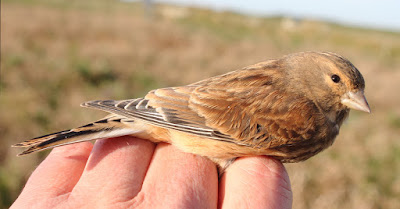The weather is pretty dire again with strong westerlies combined with frequent heavy showers of rain and hail, or snow on higher ground. There’s little point in going out birding and no chance of ringing today, but instead news and pictures of Fieldfares.
We’re having a good run of information from our ringing efforts at Oakenclough on the edge of the Pennine Hills and the Bowland Forest. Since starting this project a couple years ago Andy and I have where possible focused on catching species and bird families that are migratory rather than resident.
We have been targeting finches and thrushes in particular, a strategy which has paid off with some very interesting recoveries of Goldfinch, Siskin and Lesser Redpoll. There was an unexpected but fascinating Goldcrest caught too, one that seemed to be heading for a winter in France.
The latest communiqué from the BTO involves a first year Fieldfare ring number LC51848 caught on the morning of 31st October 2015. We caught just four Fieldfares that morning but LC51848 was later recaptured by another ringer - on 31st October 2016, exactly 12 months later, this time in Gwynedd, North Wales.
Fieldfare - Oakenclough to Gwynedd, Wales
On initial inspection the detail of elapsed time and distance travelled may not seem too fascinating but the Fieldfare’s probable lifestyle in the intervening period makes for interesting thoughts and speculation.
The Fieldfares that arrive in the UK in October and November originate from Scandinavia and are migrants whose departure date is dependent upon the timing and abundance of the northern berry crop. As a highly gregarious species whole flocks fly off south and west on a broad front during October/November and within a day or two the same birds arrive across Britain in sometimes huge numbers. They then begin a roaming lifestyle in search of wild fruit crops. They visit hedgerows until the berry crop is exhausted after which they feed upon invertebrates taken from open fields or visit orchards to feed on fallen fruit, especially during cold and icy spells.
Fieldfare
Some wintering Fieldfares travel as far as northwest France and northwest Iberia where they come under pressure from hunters who can take a heavy toll on thrush species as a whole.
The wintering population of Fieldfares in Britain is thought to number about a million individuals. During March and April Fieldfares begin their journey back north but this time with a greater urgency. They continue their gregarious lifestyle and upon arrival in their breeding grounds where they occasionally nest in colonies of 40-50 pairs. In certain situations and free from hunting and disturbance Fieldfares have taken to nesting in town parks, orchards and gardens, as well as tree-lined streets, especially in Norway.
So after spending its first winter in Britain our Fieldfare LC51848 found its way back to Sweden or Norway during 2016 where hopefully it bred and raised a whole new family. In mild winters some Fieldfares are able to stay in Scandinavia and dispense with the need to leave the northern cold.
But in the autumn of 2016 our Fieldfare chose to migrate south and west again on very much the same trajectory as it did in 2015. Luckily another ringer was around to provide us with yet more data on Fieldfares.
Linking today to Eileen's Saturday.
But in the autumn of 2016 our Fieldfare chose to migrate south and west again on very much the same trajectory as it did in 2015. Luckily another ringer was around to provide us with yet more data on Fieldfares.
Linking today to Eileen's Saturday.






























































.jpg)














